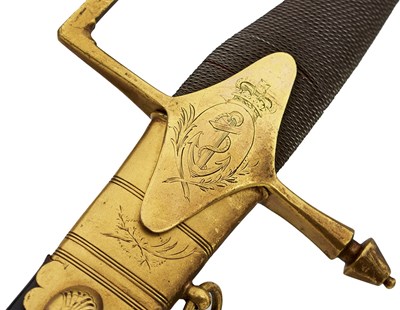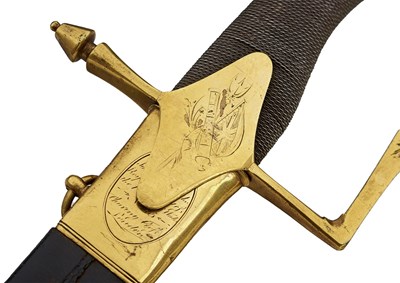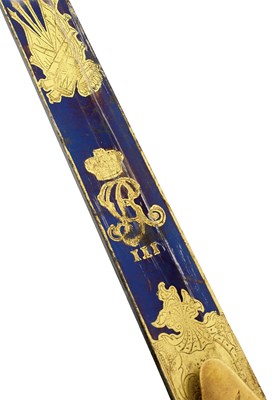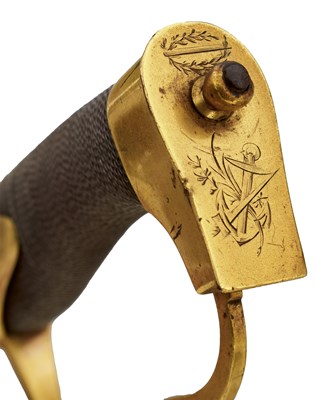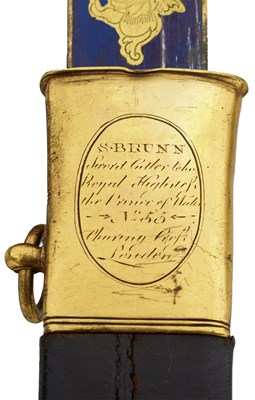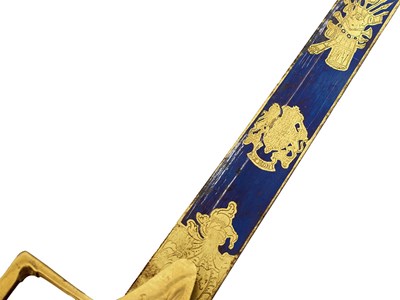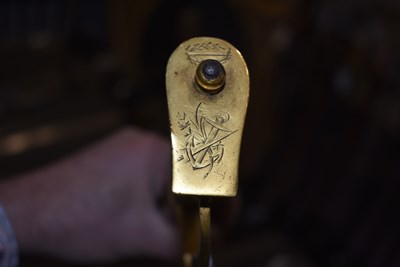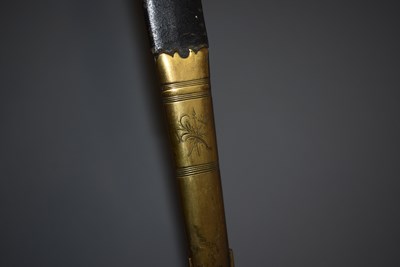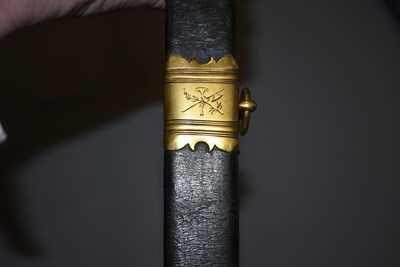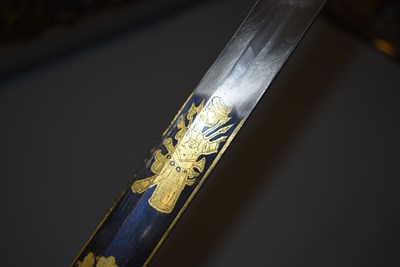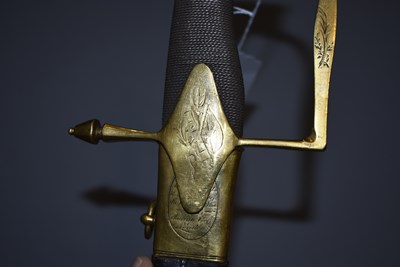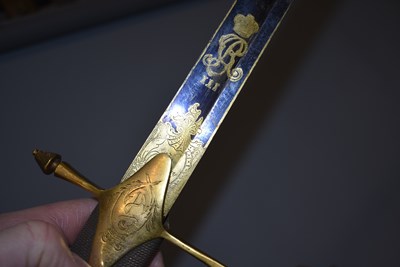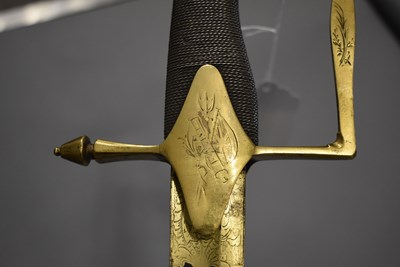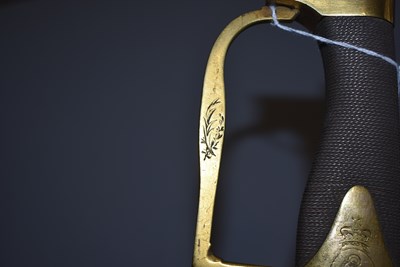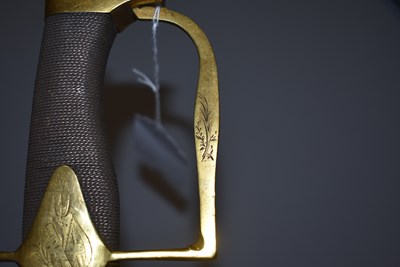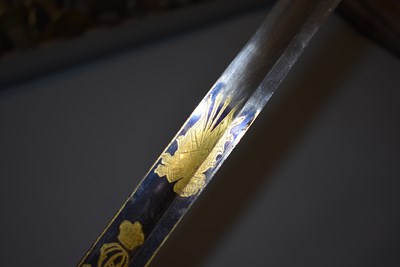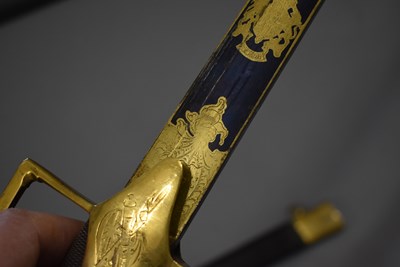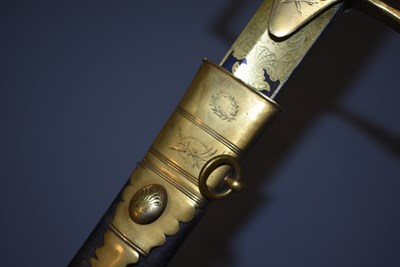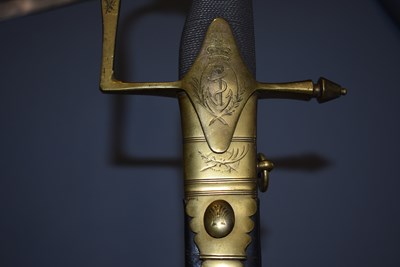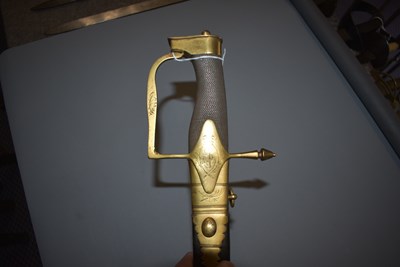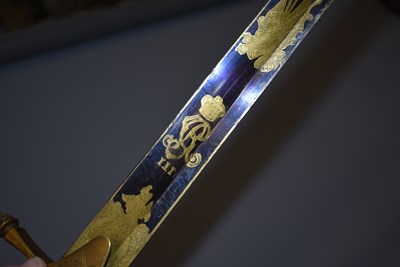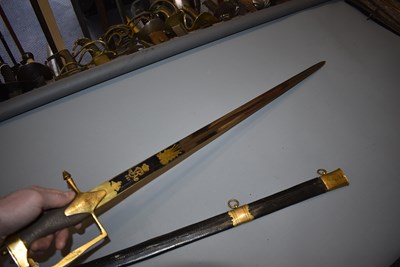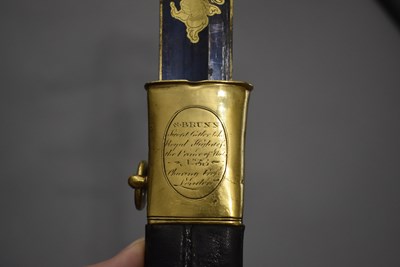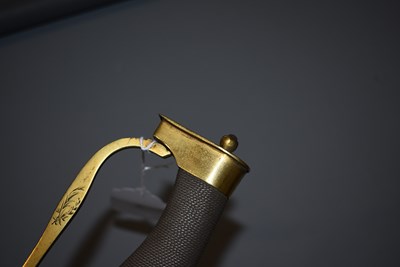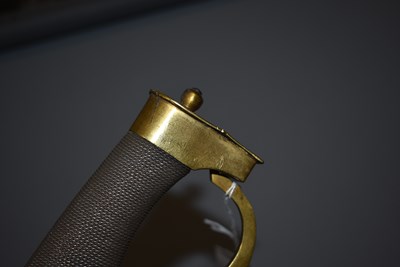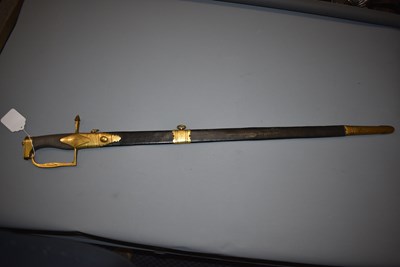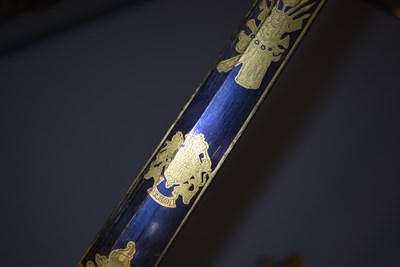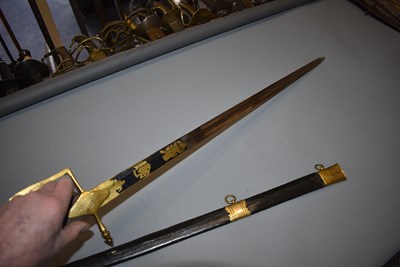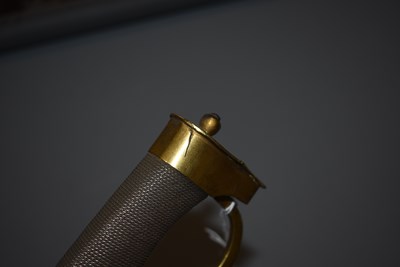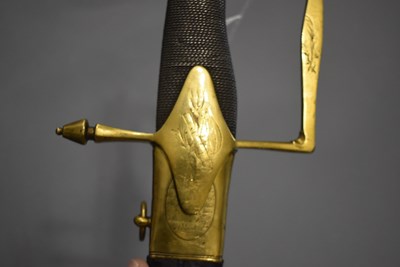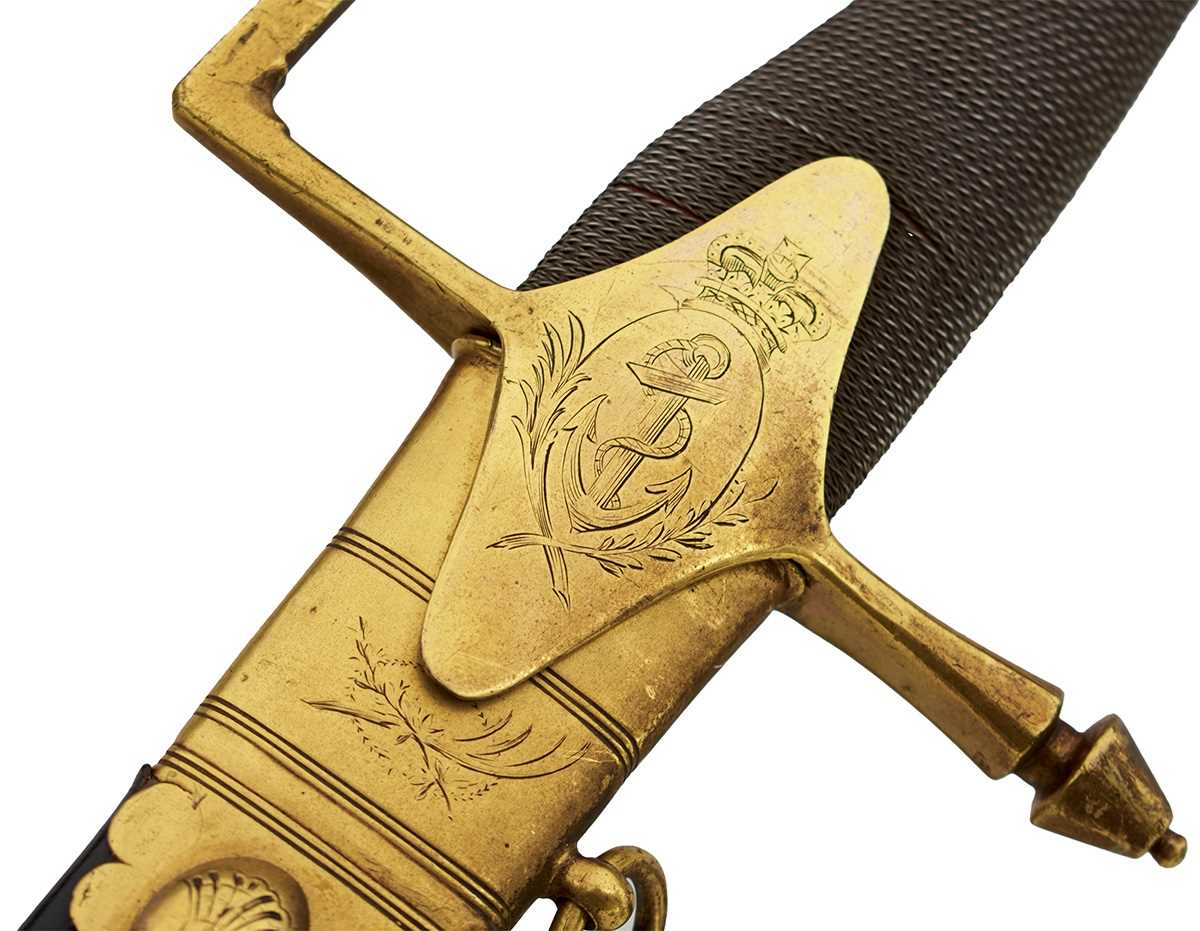26th Mar, 2024 10:00
SPRING VIRTUAL FINE ANTIQUE ARMS & ARMOUR AUCTION
1
A RARE AND IMPORTANT NAVAL OFFICER'S SWORD
77cm blade etched and gilt against a blued ground with a trophy of arms and crowned GR cypher and on the reverse with a trophy of arms and the Royal Arms, beneath the langets the blade is signed Konigl Gewehr Fabrik, Hertzberg 1797, gilt hilt with coffin shaped pommel engraved with an anchor and foliage, foliate engraved knuckle guard and large langets engraved with a fouled anchor beneath a crown and the reverse with a naval trophy of arms, the grip bound with twisted silver wire, in its leather scabbard with gilt mounts engraved with foliage, the lockett signed S. Brunn, Sword Cutler to his Royal Highness, the Prince of Wales, No. 55 Charing Cross London. Provenance. The Meldonfoot Collection, Phillips Scotland 1st October 1991 Lot 160.
Presented to Admiral Sir Philip Charles Durham by The Duke of Clarence. Philip Durham entered the Navy in 1777 and as a Midshipman saw service in America and Gibraltar. As acting Lieutenant he survived the sinking of the Royal George in 1782. He was officially promoted in December 1783 and served on various ships until 1790 when he was promoted to Commander. He achieved post rank in 1793 and was appointed to the Anson, the largest frigate in the Navy, in 1794. It was in this ship in 1798 that he captured La Loire, a deed for which he was given this sword. He later commanded the Defiance at Trafalgar, where he was wounded. He continued his lengthy and distinguished career and in 1830 became a full Admiral and was appointed Knight Grand Cross of the Order of the Bath. He died in 1845. The Duke of Clarence, later King William IV, was known as the "Sailor Prince". He entered the Navy in 1779, attained the rank of Captain in 1786 and was best man at Nelson's wedding in 1797. He gave a number of swords to naval officers who had distinguished themselves in various ways. At first these were similar to those given to officers of the 10th Light Dragoons by his brother, the Prince of Wales in 1792. Later the swords adhered to the 1805 and 1827 patterns. This particular sword was given to Durham in 1794 when he was summoned to Court and the Duke took off his own sword and sword belt and offered them as a mark of esteem. Only about half a dozen of these swords are known to exist and, as they were not inscribed with the recipient's name, only two others can definitely be ascribed to a beneficiary, these being those given to Admirals Duckworth and Collingwood. A unique opportunity to acquire a sword with Royal provenance, which is being offered for sale for only the second time in two hundred and thirty years.
Sold for £18,000
77cm blade etched and gilt against a blued ground with a trophy of arms and crowned GR cypher and on the reverse with a trophy of arms and the Royal Arms, beneath the langets the blade is signed Konigl Gewehr Fabrik, Hertzberg 1797, gilt hilt with coffin shaped pommel engraved with an anchor and foliage, foliate engraved knuckle guard and large langets engraved with a fouled anchor beneath a crown and the reverse with a naval trophy of arms, the grip bound with twisted silver wire, in its leather scabbard with gilt mounts engraved with foliage, the lockett signed S. Brunn, Sword Cutler to his Royal Highness, the Prince of Wales, No. 55 Charing Cross London. Provenance. The Meldonfoot Collection, Phillips Scotland 1st October 1991 Lot 160.
Presented to Admiral Sir Philip Charles Durham by The Duke of Clarence. Philip Durham entered the Navy in 1777 and as a Midshipman saw service in America and Gibraltar. As acting Lieutenant he survived the sinking of the Royal George in 1782. He was officially promoted in December 1783 and served on various ships until 1790 when he was promoted to Commander. He achieved post rank in 1793 and was appointed to the Anson, the largest frigate in the Navy, in 1794. It was in this ship in 1798 that he captured La Loire, a deed for which he was given this sword. He later commanded the Defiance at Trafalgar, where he was wounded. He continued his lengthy and distinguished career and in 1830 became a full Admiral and was appointed Knight Grand Cross of the Order of the Bath. He died in 1845. The Duke of Clarence, later King William IV, was known as the "Sailor Prince". He entered the Navy in 1779, attained the rank of Captain in 1786 and was best man at Nelson's wedding in 1797. He gave a number of swords to naval officers who had distinguished themselves in various ways. At first these were similar to those given to officers of the 10th Light Dragoons by his brother, the Prince of Wales in 1792. Later the swords adhered to the 1805 and 1827 patterns. This particular sword was given to Durham in 1794 when he was summoned to Court and the Duke took off his own sword and sword belt and offered them as a mark of esteem. Only about half a dozen of these swords are known to exist and, as they were not inscribed with the recipient's name, only two others can definitely be ascribed to a beneficiary, these being those given to Admirals Duckworth and Collingwood. A unique opportunity to acquire a sword with Royal provenance, which is being offered for sale for only the second time in two hundred and thirty years.
Auction: SPRING VIRTUAL FINE ANTIQUE ARMS & ARMOUR AUCTION, 26th Mar, 2024
Virtual Fine Antique Arms, Armour and Militaria auction. No bidding in person.
Viewing
Monday 18th of March to Monday 25th of March.
